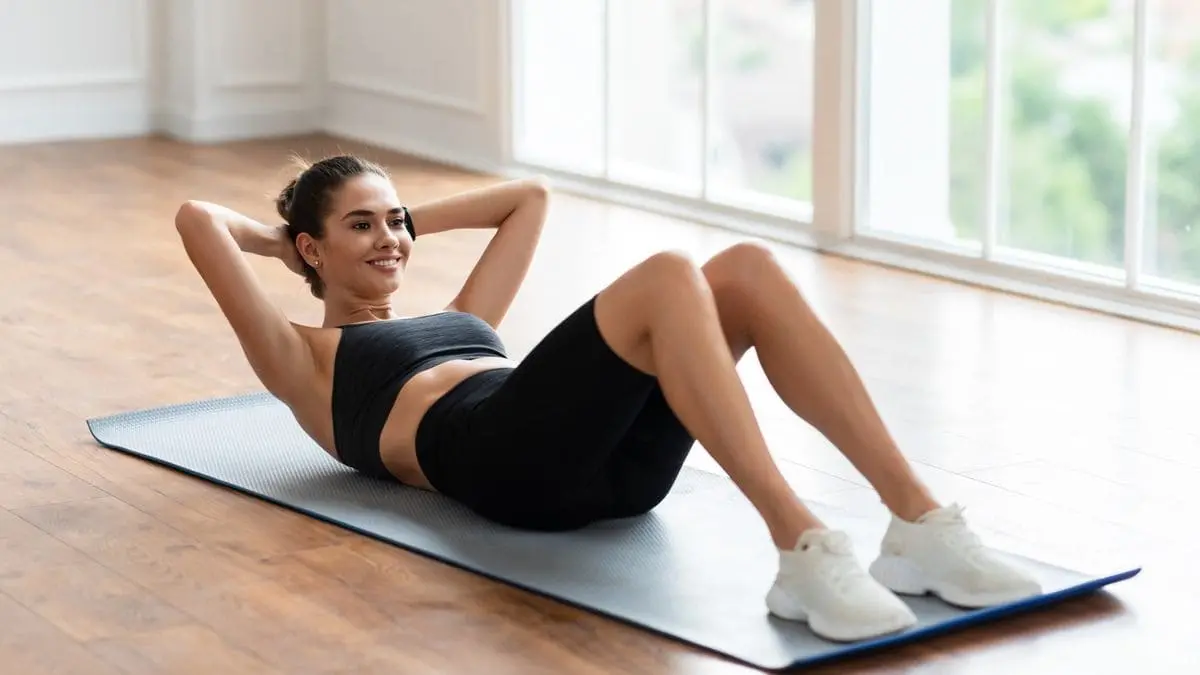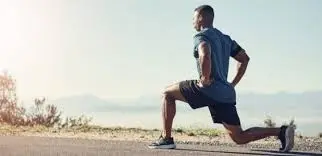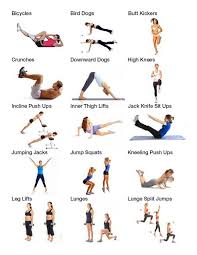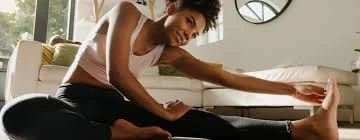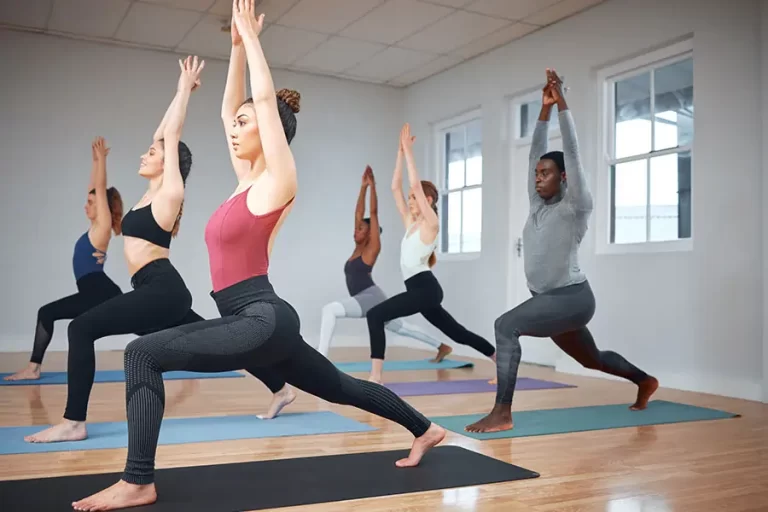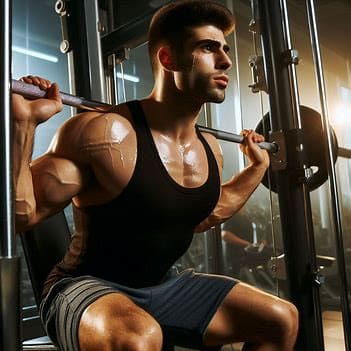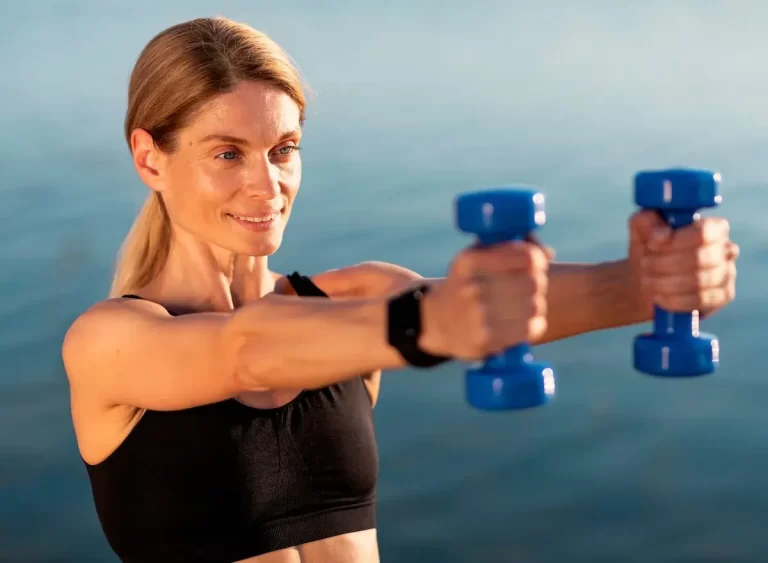Curl ups Exercise (Sit Ups): Health Benefits, How to Do?
Curl ups Exercise, also known as sit-ups, are intended to build stronger abdominal and core muscles. Doctors recommend them to treat low back pain and to lessen the lumbar spine’s lordotic posture.
What is Curl up exercise?
- The curl-up is a good workout to strengthen the abdominal muscles.
- The goal of this exercise is to develop the abdominal muscles.
- “Curl-ups” are a typical stomach exercise that has you lying on your back with your upper body raised.
- Your body weight is used in this exercise to tone and strengthen the abdominal muscles that stabilize your core.
- Curl-ups target your hip flexors, chest, and neck muscles, and the rectus abdominis, transverse abdominis, and obliques.
- You may use your gluteal and lower back muscles to help you maintain proper posture with this exercise.
- More muscles are worked during crunches and stable core exercises than during curl-ups, which have a wider range of motion.
- Your fitness regimen would benefit greatly from this activity.
- Curl-ups are also known as abdominal crunches and sit-ups.
The health advantages of Curl ups Exercise:
Traditional core exercises like curl-ups are a common feature of fitness programs because of their success and simple usage.
- Helps in relieving back pain
Your hip and back muscles are becoming stronger and more flexible during this exercise. You have relief from back pain and your back gets stronger as a result.
- Improve your core muscular strength
One of the main reasons people perform curl-ups is their power in the core muscles.
Your core gets stronger, and tighter, which helps lower your risk of back pain and injuries. You’ll be able to move easily while you do your everyday tasks and engage in physical activities.
- Helps to improve athletic achievement
When engaging in any physical activity or sport, people who play sports can perform better and feel less tired when their core muscles are stronger. Athletes can also keep good posture using it.
- Increase stability and balance
Being stable and balanced while moving through daily tasks and sports activities can be assisted by having a strong core muscle. This workout might improve the coordination between your hips, pelvis, lower back, and core muscles.
- Better alignment of posture
A strong core muscle supports better mobility of the hips, spine, and shoulders, maintaining proper anatomical alignment while improving or maintaining excellent posture. Fewer back aches and strains as well as better breathing are advantages of proper posture.
It helps in lowering the likelihood of back injuries and pain. The lower back, hips, and pelvic muscles are also strengthened with curl-ups.
- Hip Flexor Strength
The muscles that lift your legs off the ground and bend your hips to perform walking the most basic human movement are the rectus femoris, iliacus, and iliopsoas. Sit-ups strengthen these muscles as well as your abdominal muscles.
How should I perform the curl-up exercise?
Partial curl-ups
Without any special equipment, you may perform it simply at home.
- With your arms folded across your chest, you must lie flat on the ground on your back.
- Your feet must now be flat on the ground and both of your knees must bend.
- Your foot is positioned somewhat apart from your rear end.
- Elevate your entire body between 30 and 40 degrees above the floor.
- Your muscles in your abdomen feel tense.
- When the space between your hips and ribs gets smaller, curl-ups will result.
- Hold this position for a few seconds.
- Now drop your upper body to the floor.
- Then relax.
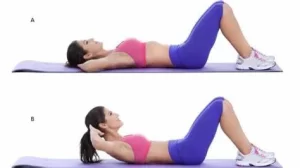
Curl ups Exercise Variations:
If traditional sit-ups are too difficult (or too easy), try any of these variations based on your fitness level.
Stability ball sit ups
A stability ball can help avoid pain in the back by supporting the natural curve of the spine and relieving pressure on the vertebrae.
- Sit on a stability ball, your feet level on the ground.
- Lean back slowly, bringing your shoulders, back, and tailbone to the ball.
- Reposition your legs such that your knees are directly above your ankles and your thighs are parallel to the floor.
- Put the tips of your fingertips in the middle of your head, bring your elbows in, and then press your shoulder blades together hard.
- Exhale as you engage your core and move the body closer to your thighs, raising your upper back off the ball.
- Hold this position for a few seconds.
- After that, take a breath and slowly return to the ball.
- Then relax.
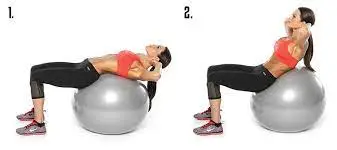
Bicycle Crunches
The side muscles, or obliques, are worked with this kind of crunch. Begin as if you were doing crunches, but as you curl up, point your left shoulder towards your right knee. Point your right shoulder toward your left knee during the next repetition.
- Start on the flooring in a comfortable supine position.
- While lying on the ground, raise your shoulders and extend your legs.
- Bend to one side and push one knee to the nearest elbow while extending the other leg as far as you can.
- Go back to where you were prior crunching on the other side.
- Then relax.
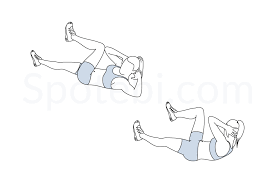
V-Ups
The exercise helps to improve balance, strength, and coordination. They can be completed when you want a more difficult task.
- Lie on your back, knees straight, arms extended overhead.
- Elevate both your feet and your arms to the ceiling at the same time.
- You should keep your legs and chest at an upright angle.
- Bring your arms parallel to the ground.
- Hold this position for a few seconds.
- Slowly return to the starting position.
- Then relax.
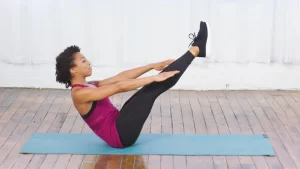
Decline Sit-Up
Perform sit-ups on a decline bench to increase the difficulty level. Curling your body up becomes more difficult as gravity pulls you down. You can wrap your legs or hook your feet on a decline bench with a brace to keep yourself stable.
- You can change the setup’s difficulty by adjusting the bench’s angle.
- When the decline bench’s angle increases, the exercise gets harder.
- Place your feet under the padded bar and sit on the bench with your knees bent.
- Wrap your fingers around the base of your skull or fold your arms across your chest.
- Lift yourself up until your body and thighs meet.
- Hold this position for a few seconds.
- Then return to your neutral position.
- Then relax.
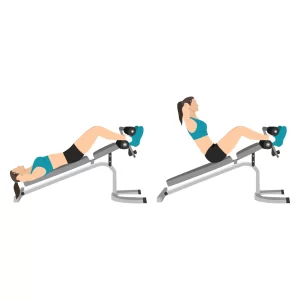
Sit up with your legs straight
As you strengthen your core, try straight-leg sit-ups. Sit up straight as you normally would, and place your legs in front of you instead of bending at the knees. This sit-up form strengthens the core by reducing the need for hip flexors and recruiting more abdominal muscles.
- Align your legs freely and maintain a level posture on the ground.
- The legs shouldn’t be flexed at the knees like in a standard sit-up.
- Keeping your head still and supine, lay your hands on the sides of your body.
- Take a breath, tense your abs, and raise your upper body off the ground.
- Return your body to its starting posture by lowering it gradually once your spine is parallel to it.
- Then relax.
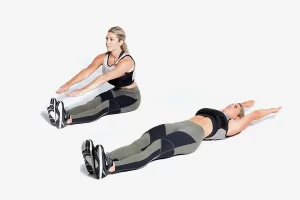
To ensure safe exercise, take into consideration the following advice:
- Make sure your body is warmed up enough before working out.
- When exercising and you feel pain, stop.
- To avoid overtraining and painful muscles, you should gradually increase the number of repetitions and duration of your exercises.
- When you exercise, take proper form to avoid harm to your body and to reap the benefits that you want.
- When working out, try to wear clothing that doesn’t restrict your movement too much. Wear loose clothing alternative.
- While working exercise, keep your spine straight.
- It’s recommended that you take a deep breath before working out and slowly exhale.
When should you stop doing this exercise?
- Recent damage to the spine.
- Hernia in the abdomen.
- Just performed abdominal surgery.
- Weakness of the abdominal muscles
- If any pain arises during exercising.
- Lumbar region disc bulging
- The lumbar retro-listhesis, in which There is no need for this exercise.
- If your back pain becomes worse while you exercise
Mistakes That Are Common:
As the following guidelines make clear, sit-ups are a complex exercise. They need a high level of body awareness and muscular control, leaving plenty of space for mistakes in beginner and advanced exercises. Remember to avoid these typical sit-up mistakes the next time you attempt them.
- Craning of the neck
When performing sit-ups, it is usual to use a “forward head” position. Craning your neck during sit-ups can produce aches and pains, and at worst, it might result in a muscle strain in your neck or upper back.
- Crashing on the floor
Beginners may mistakenly crash while lowering down during sit-ups. This happens when you are too tired or have a weak core to control the lowering phase. Your upper back is going to support the bulk of the load since your lower spine will not be in contact with the floor. Sit-ups with a curved lumbar spine can cause lower back pain, in addition to impact-related pain.
- Using excessive hip flexor
Your abs and hip flexors are the main muscles used in sit-ups. Tight hip flexors might cause people to mistakenly use their hip muscles rather than their stomach muscles when maintaining an upright posture. Engage fewer hip flexor muscles and more abdominal muscles to improve your core.
Summary:
Situps help develop and maintain a strong core, which is beneficial for all kinds of exercise. They are a good addition to any total-body exercise program that combines strength training and cardiovascular exercise.
FAQs
What are the benefits of curling up?
Crunches, sometimes referred to as curl-ups, provide strength to the abdominal and core. This comprises the lower back’s erector spinal muscles as well as the muscles of the upper and lower abdomen. The gluteal muscles are also used in curl-ups. Curl-ups strengthen your abs and increase your endurance while exercising.
Can I perform curl-ups each day?
As for your question regarding doing push-ups and crunches every day, I say go for it. You won’t ever have to skip a day between exercises if the weight is so high that you’ve created the ideal environment for overload and muscular growth.
How many curl-ups do you do each day?
The best way to tone and develop your abs is to perform three sets of sit-ups, 20–30 repetitions per set. Better yet, you only need to do crunches three times a week if you pair them with weight and cardio exercises.
What are the advantages of curl-ups?
The sit-up, also known as the curl-up, is a workout that helps to tighten, tone, and build the muscles around the abdomen. Sit-ups are comparable to crunches in that they condition additional muscles and have a wider range of motion than crunches, which also target the rectus abdominis.
Does curl-up exercise help with abs?
Curl-ups are an easy way to build up your core without needing any special tools at home. For you to start including curl-ups in your exercises, we detail how to perform them correctly below.
Are curl-ups considered a type of strength training?
Even though the curl-up exercise is a popular therapeutic technique for strengthening abdominal muscles, care must still be taken when performing it.
References:
- N. P., a physiotherapist (2023d, December 13). Curl-up Exercise (Sit-Ups): Advantages for Health, How to Perform? Mobile Clinic for Physiotherapy. How to do curl-ups exercise and its health benefits: https://mobilephysiotherapyclinic.in/
- Cronkleton, E. (2023b, July 17.). 9 Advantages of Sit-Ups and How to Perform Them. Healthline: https://www.healthline.com/health/sit-ups-benefits
- Inhc, A. C. (2020, September 30). Sit-ups Instructions. Very well-fitted. https://www.verywellfit.com/how-to-do-sit-ups-techniques-benefits-variations-5075764
- Image 2, 32742442 – Online Store. https://mulovesm.best/product_details/32742442.html
- Image 5, L. Putra (n.d.–b). On a white background, women crunching alone during their decline bench sit-ups. The vector illustration of a woman performing a decline bench press, sit-ups, crunches, and exercise on a white background can be found on Vecteezy.
- Image 6, A Comprehensive Exercise Guide: Straight-Legged Sit-Ups Can Turn You Into A Fitness Beast | DMoose (2022, June 20). Straight-legged sit-ups: https://www.dmoose.com/blogs/abs

